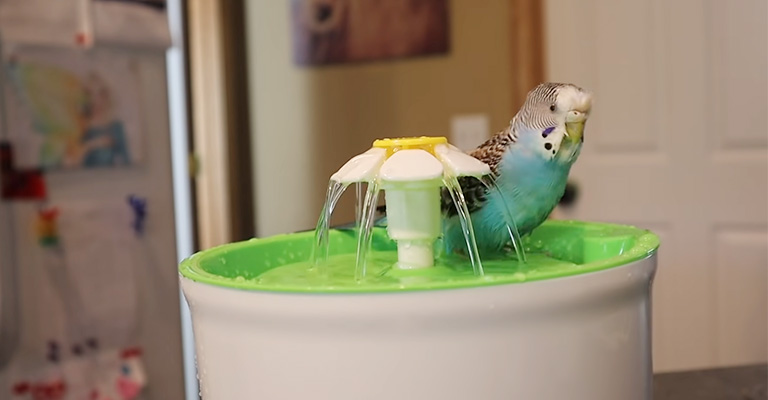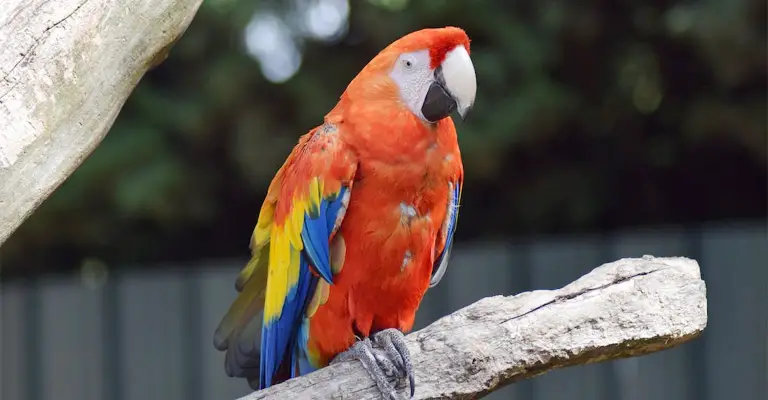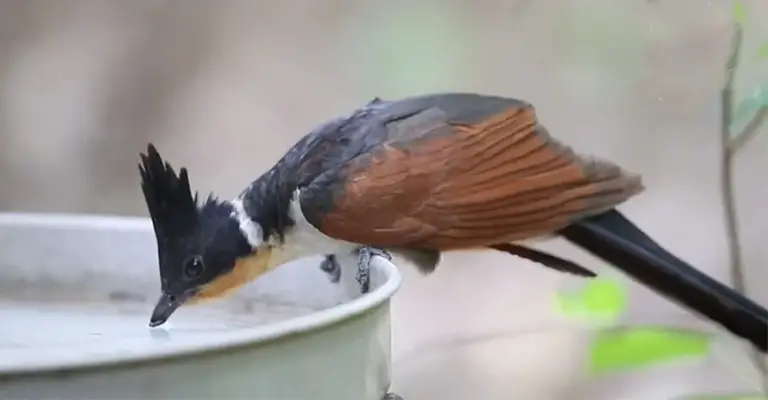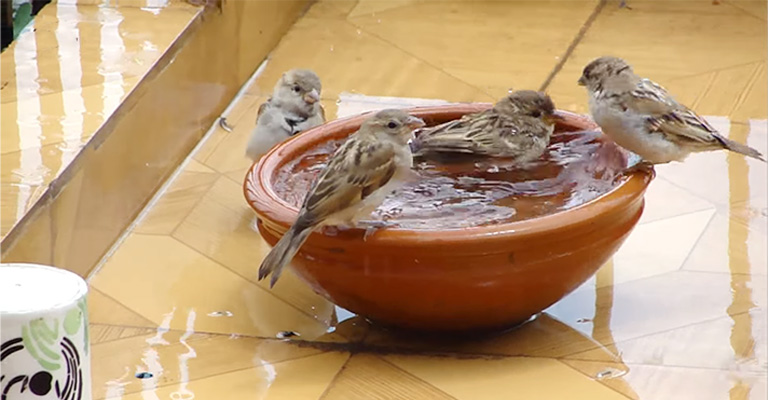The enchanting world of birds is a tapestry woven with diverse behaviours and intricate adaptations.
Among the fundamental necessities of life, the question of whether birds drink water might seem trivial, yet it uncovers the fascinating physiology and behavioural patterns of these feathered creatures.
Indeed, just like any living being, birds do drink water to sustain their vitality and health.
However, the ways in which different bird species quench their thirst and the factors that influence their water intake vary widely across the avian kingdom.
This exploration delves into do birds drink water. (how much and how much), shedding light on the methods birds employ to drink water and the essential role this simple act plays in their survival.

Do Birds Drink Water- How Much?
Yes, birds do drink water, as it is essential for their survival and health. Water helps birds regulate their body temperature, digest their food, eliminate their waste, and maintain their feathers.
The amount of water that birds are supposed to drink depends on various factors, such as their size, diet, activity, and environment.
Here are the details on how much water different types of birds are supposed to drink:
Hummingbirds
Hummingbirds are small and colourful birds that feed on nectar and insects. Hummingbirds need to drink a lot of water to balance their high metabolism and energy expenditure.
Hummingbirds can drink up to 8 times their body weight in water per day, which is equivalent to about 5 millilitres of water for an average hummingbird that weighs about 0.6 grams.
Parrots

Parrots are medium-sized and colourful birds that are popular as pets or companions. Parrots need to drink enough water to keep their beaks, tongues, and feathers moist and healthy.
Parrots can drink about 5% of their body weight in water per day, which is equivalent to about 15 millilitres of water for an average parrot that weighs about 300 grams.
Penguins
Penguins are aquatic and flightless birds that live in the polar regions of the world. Penguins need to drink fresh water to prevent dehydration and salt poisoning from their salty diet and environment.
Penguins can drink about 10% of their body weight in water per day, which is equivalent to about 2 litres of water for an average penguin that weighs about 20 kilograms.
Ostriches
Ostriches are the largest and fastest birds in the world, and they live in the savannas and deserts of Africa and Asia. Ostriches need to drink a little water to conserve it in their dry and hot habitat.
Ostriches can drink about 1.5 litres of water per day, which is equivalent to about 0.75% of their body weight for an average ostrich that weighs about 200 kilograms.
Flamingos
Flamingos are large and graceful birds that live in lakes, rivers, or ponds. Flamingos need to drink a lot of water to filter out the food and minerals that they eat from the water.
Flamingos can drink up to 20% of their body weight in water per day, which is equivalent to about 1 litre of water for an average flamingo that weighs about 5 kilograms.
Do Birds Drink Water- How Do?

Yes, birds do drink water, as it is essential for their survival and health. However, different birds have different ways of drinking water, depending on their anatomy, habitat, and behaviour.
Here are some examples of how different birds drink water:
Sipping
Some birds, such as pigeons, doves, or parrots, drink water by sipping it with their beaks. They dip their beaks into the water and then tilt their heads back to swallow the water.
They can drink continuously without lifting their heads, as they have a special pouch in their throat that stores the water temporarily.
Scooping
Some birds, such as ducks, geese, or swans, drink water by scooping it with their bills.
They submerge their bills into the water and then filter out the water from the food or debris with their tongue or lamellae (tiny ridges on the edge of their bills).
Lapping
Some birds, such as hummingbirds, woodpeckers, or toucans, drink water by lapping it with their tongues.
They flick their tongues in and out of the water and then draw the water into their mouths with capillary action (the movement of liquid along a surface due to surface tension).
Soaking
Some birds, such as sparrows, finches, or warblers, drink water by soaking it with their feathers. They dip their feathers into the water and then squeeze the water out with their beaks.
Absorbing
Some birds, such as vultures, condors, or storks, drink water by absorbing it through their skin.
They spread their wings or legs over the water and then let the water evaporate from their skin.
Sucking
Some birds, such as chickens, turkeys, or quails, drink water by sucking it with their mouths. They open their mouths and then create a vacuum that draws the water in.
They can drink easily and simply, as they do not need any special adaptations or skills to drink.
Dew-Catching
Some birds, such as desert larks, sandgrouse, or cactus wrens, drink water by catching dew with their feathers or feet.
They fly over or walk on moist surfaces and then collect the dew drops with their feathers or feet.
Fog-harvesting
Some birds, such as petrels, albatrosses, or penguins, drink water by harvesting fog with their bills or nostrils.
They fly through or breathe in the fog and then condense the water vapour into liquid water with their bills or nostrils.
Nectar-Drinking
Some birds, such as sunbirds, honeyeaters, or lorikeets, drink water by drinking nectar from flowers or plants.
They use their long and curved bills and tongues to reach and extract the nectar from the flowers or plants.
How Do I Know If My Bird Is Getting Enough Water?

Water is essential for your bird’s survival and health, but how can you tell if your bird is getting enough water?
Here are some tips to help you monitor your bird’s water intake and hydration:
Check the water level
The simplest way to know if your bird is drinking enough water is to check the water level in their bowl or bottle every day.
You can use a measuring cup or a marker to measure how much water you fill and how much water is left.
Check The Water Quality
Another way to know if your bird is drinking enough water is to check the water quality in their bowl or bottle every day. You should look for any signs of dirt, debris, food, droppings, or algae in the water.
Check The Bird’s Droppings
A third way to know if your bird is drinking enough water is to check their droppings every day. You should look for any changes in the colour, consistency, or quantity of their droppings.
You should also look for any signs of blood, mucus, or parasites in their droppings. Normal droppings consist of three parts: a dark solid part (faeces), a white part (urine), and a clear liquid part (urine).
Check The Bird’s Weight
A fourth way to know if your bird is drinking enough water is to check their weight every day.
You can use a digital scale or a balance to weigh your bird in grams or ounces. You can also compare their weight with their normal or ideal weight for their species and size.
Check The Bird’s Skin And Feathers
A fifth way to know if your bird is drinking enough water is to check their skin and feathers every day. You should also look for any signs of plucking, biting, or self-mutilation in their skin and feathers.
Check The Bird’s Eyes And Beak
A sixth way to know if your bird is drinking enough water is to check their eyes and beak every day. You should look for any signs of dryness, redness, swelling, or discharge in their eyes and beak.
If your bird is dehydrated, their eyes and beak may be dry and irritated, and they may squint or close their eyes or beak.
Check The Bird’s Behaviour And Mood
A seventh way to know if your bird is drinking enough water is to check their behaviour and mood every day.
You should also look for any signs of lethargy, depression, aggression, or stress in your bird. If your bird is drinking enough water, their behaviour and mood should be normal and happy, and it should be active, alert, hungry, and vocal.
Check The Bird’s Temperature And Pulse
An eighth way to know if your bird is drinking enough water is to check their temperature and pulse every day.
You can use a thermometer or an infrared device to measure their body temperature in degrees Celsius or Fahrenheit.
Ask A Veterinarian
The final and most reliable way to know if your bird is drinking enough water is to ask a veterinarian.
A veterinarian can examine your bird and perform tests to determine their hydration level and health status. A veterinarian can also advise you on how much water your bird needs and how to provide it to them.
FAQ
Yes, birds need water to stay hydrated and maintain bodily functions, just like any living creature.
The amount varies by species, size, and environmental conditions. On average, a small bird might drink a few millilitres of water daily.
Birds use their beaks to scoop or sip water. Some tilt their heads back to allow water to flow down their throats, while others flick their beaks in water and swallow.
Birds can drink from a variety of sources, including puddles, birdbaths, rivers, and even dew on leaves. Clean, still water is ideal for them.
Provide a clean and easily accessible water source in their cage. You can also mist them with water or offer hydrating foods like fruits and vegetables to supplement their water intake.
Conclusion
In the vast tapestry of bird behaviours, the simple act of drinking water stands as a universal constant, an essential thread that weaves through the lives of all avian species.
From sipping dewdrops to ingesting from ponds, birds demonstrate an array of strategies to fulfil their hydration needs.
As avian enthusiasts, we find wonder in their ability to adapt and thrive within the boundaries of their environments.
Observing their drinking behaviours not only offers insights into their survival mechanisms but also beckons us to deepen our connection with these remarkable creatures.
In nurturing their well-being through accessible, clean water sources and understanding their distinct habits, we contribute to the symphony of life that resonates through every rustle of feathers and melodious song.